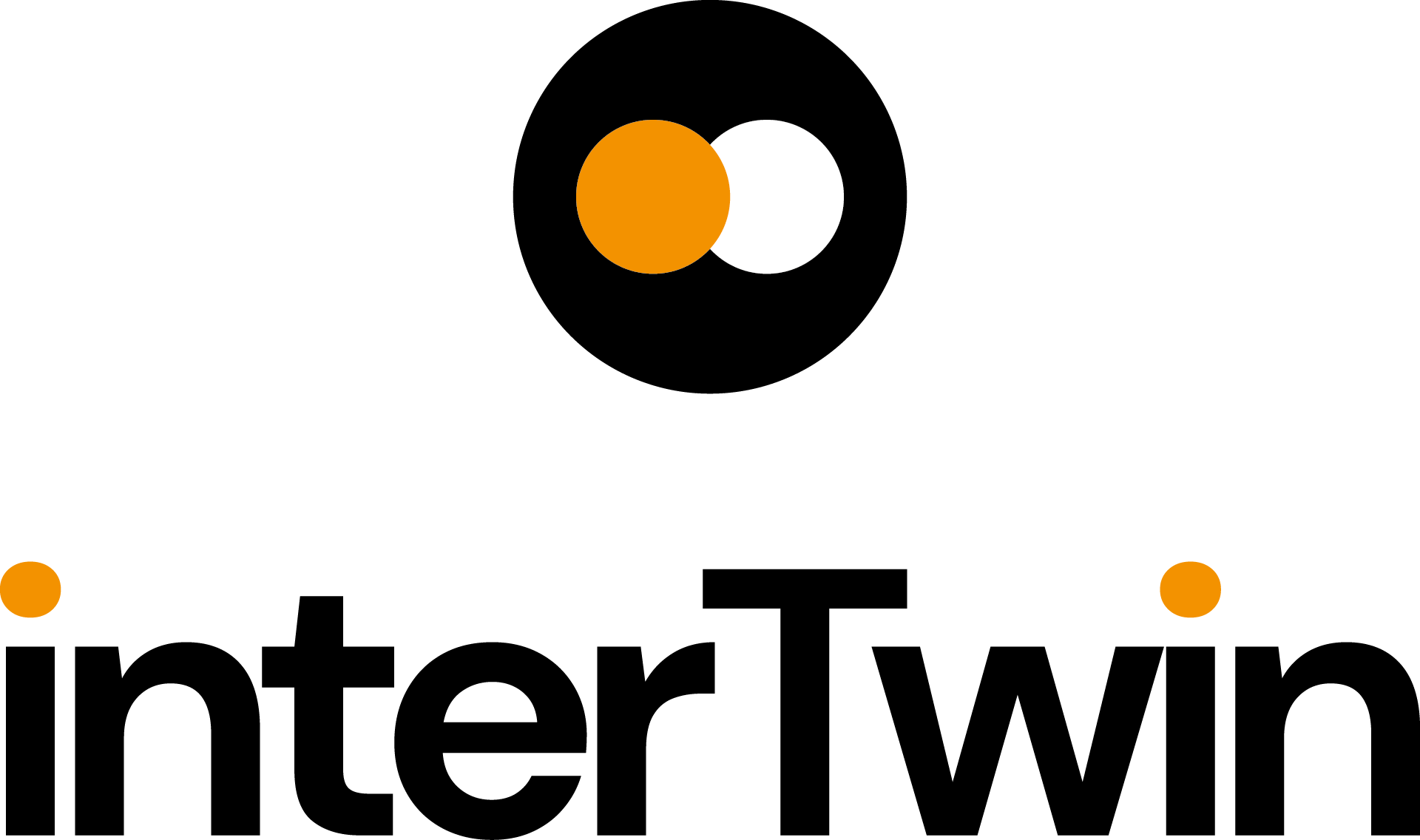interTwin has ended! What’s next?

During the last 3 years, interTwin has developed a prototype of a Digital Twin Engine (DTE) , an open-source platform built to facilitate the development, implementation and operations of scientific Digital Twins.
With the project ending on August 31st 2025, EGI is currently wrapping up the project and its results.
Project Mission
The interTwin Digital Twin Engine (DTE) is an open-source integrated platform underpinned by open standards, APIs, and protocols. It facilitates the development and implementation of specific Digital Twins. The DTE supports the setup, configuration and exploitation of Digital Twins.
Highlights
Use Cases
The interTwin work has been largely based on a collection of use cases provided by selected research communities in the fields of environmental science and physics. The use cases started out with a description of an issue that could be solved with a Digital Twin, and offer now an overview on how the Digital Twin Engine was used to build a specific Digital Twin that addresses the main challenge for each use case.
The Use Cases have been delivered by Deltares, CMCC, Eurac Research, CERFACS, CERN, INFN, CSIC, and MPG.
The interTwin DTE prototype
The interTwin Digital Twin Engine consists of different layers:
- The DTE Infrastructure Modules provide specific capabilities for implementing Digital Twins, such as federated data and computing resources needed to run modelling and simulation tasks on the computing infrastructure
- The DTE Core Modules offer cross-domain capabilities, simplifying the creation and operation of data-intensive and compute-intensive DT applications
- The DTE Thematic Modules (currently: Environment and Physics) are add-ons providing capabilities tailored to the needs of specific application groups. They implement core functionalities for a DT but domain specific. They can evolve into core modules following successful adoption by multiple resource communities across different domains.
The components are available in the project testbed together with the related documentation.
Toolkit for AI workflow and method lifecycle management
itwinai, a toolkit designed to simplify AI workflows for scientific research including Digital Twins development, particularly for use on cloud platforms and high-performance computing (HPC) environments. itwinai integrates some of the leading frameworks for machine learning, distributed training, and workflow tracking, allowing researchers to efficiently manage their AI tasks by breaking complex processes into modular, reusable, and fully configurable steps. This framework has been deployed on several EuroHPC Tier‑0 and Tier‑1 systems. Production‑scale workloads have been demonstrated on EuroHPC Vega (Slovenia) and the Jülich Supercomputing Centre (Germany).
Quality Framework
SQAaaS is a platform for quality assessment and awarding of multiple digital objects which provides researchers with ready-to use CI/CD pipelines that cross-check the relevant quality criteria of any software project. In interTwin the SQAaaS platform has been expanded to embed data and model quality assessment. The platform can programmatically incorporate quality criteria in the CI/CD framework and produce automated data and model verification flows analogous to those we will have for the software in git repositories.
DTE Federated Infrastructure
interTwin developed a distributed compute platform providing access to distributed data and integrating HTC, HPC, Cloud resources from project partners and early adopters. In particular the access to HPC computing and storage from EuroHPC VEGA, Julich, PSNC and Vilnius University, Cloud from UKRI, GRNET and EODC and HTC resources from KBFI. More integrations have been performed with CESGA, DESY and INFN computing centers. The access to resources is streamlined thanks to the integration with EGI Check-in.
Interoperability Framework
The interTwin interoperability framework aligns technical approaches and foster collaboration in modelling and simulation application development across scientific domains. It includes an architectural blueprint for the interTwin Digital Twin Engine, outlining its functional specifications, requirements analysis, and fundamental building blocks. Additionally, it takes into account other relevant initiatives like Destination Earth and the interoperability aspects, highlighted also by the piloting and integration activities achieved.
Looking forward
Integration with EOSC and DestinE
One of the services included in the EOSC EU Node is also able to interpret and apply TOSCA definitions and therefore a subset of the TOSCA templates for services developed the project has been tested in the EU Node infrastructure and published on ToolsHub so that others in EOSC can benefit from the interTwin DTE developments. In particular OSCAR and openEO deployment definitions, developed in interTwin, have been tested and published there as tools and integrated via EOSC AAI Federation (EGI Check-in).
The pilots with Destination Earth (DestinE) started in the project will continue with ECMWF in the context of the EGI led project RI-SCALE, where DestinE AI models will be integrated with tools developed in interTwin to improve scalability.
Open Source Community
The DTE software is maintained by the project partners in the project Github Organisation in collaboration with external communities already reusing some of the components. In particular the interLink software developed in the project has been included as CNCF Sandbox project and it has grown interest in the open source communities (both Scientific and Industry).
Exploitation of AI Capabilities
interTwin developments are contributing to the ongoing AI revolution - enriching the growing EU AI ecosystem to be further consolidated in future EC funded projects . The AI toolset with integrated provenance (yProv) and quality (SQAaaS) capabilities will become crucial for providing future AI and GenAI-based solutions.
Exploitation of modules by project partners and other projects
We continue to collect examples of successful exploitation of interTwin project results on our Success Stories page. The interLink module has successfully been used to run GenAI on Supercomputers, and adopted by industrial players and SMEs, such as HelixML, and in operational infrastructurs (such as Leonardo, VEGA), it has been part of a collaboration with AI4EOSC, and it has entered the CNCF Sandbox. OSCAR has been part of the abovementioned collaboration with AI4EOSC, and has been deployed in the EGI Federated Cloud in Europe, and in ‘Chameleon’, in the US (Discover-US project). Infrastructure Manager and DT-Flood have been deployed in the same Chameleon project.
EGI has gained a lot of expertise in the project in integrating Digital Twins AI workflows on the Cloud - HPC continuum, thanks to the HPC providers included in the project (EuroHPC VEGA, Julich and PSNC) and the activities carried out to transparently federated both workloads and Data access/transfer. Digital Twinning has been incorporated as a core topic for the EGI strategy 2025-2029. The activities will continue in EGI with the inclusion of the HPC as a service solution in the portfolio by partnering with interested HPC centers. The developments in this area are also already exploited in new EC projects coordinated by EGI and started in 2025 (RI-SCALE and EOSC Data Commons) where the solutions will be further matured.
More stories to come!



